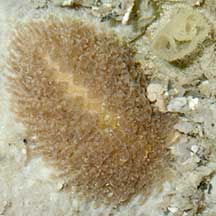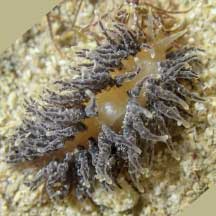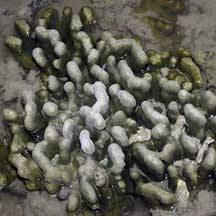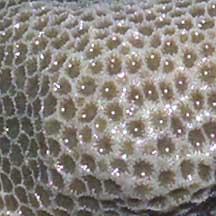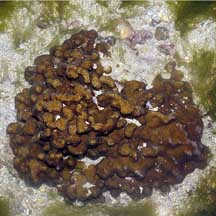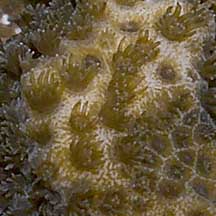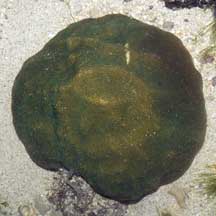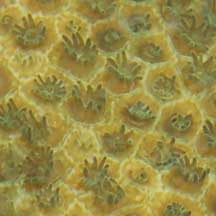 |
|
| hard corals text index | photo index |
| Phylum Cnidaria > Class Anthozoa > Subclass Zoantharia/Hexacorallia > Order Scleractinia > Family Poritidae |
| Pore
coral Porites sp. Family Poritidae updated Sep 2025 Where seen? This large coral with tiny corallites and polyps is among the most commonly encountered hard corals on many of our shores, including our Northern shores. Pore coral colonies are long-lived and can grow very large. The colonies produced by these tiny polyps can be more than 5m across! They can grow rapidly in ideal conditions. They are usually found in shallow, sunlit places. Features: Colony 10-20cm, sometimes much larger. Colonies are generally boulder shaped with a smooth surface or with smooth bumps or hillocks. But the colonies can also be encrusting, lobed and branching. The tiny corallites are shallow and don't stick out of the surface. The surface thus often appears smooth with many tiny pores. Polyps are very tiny (0.1-0.2cm) with short body columns and short tentacles that are usually only extended at night. To get rid of excessive sediments, the corals may produce slime that traps sediments. The slime layer is then shed like a skin. Colours seen include yellow, brown, green, blue, purplish. Usually the colony is of one uniform colour. Pinkish patches usually suggest stressed polyps. |
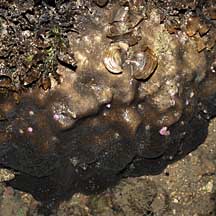 St. John's Island, Aug 08 |
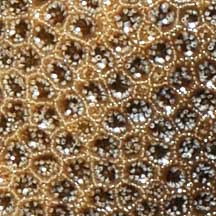 Tiny hexagonal corallites. |
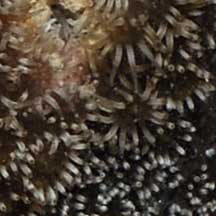 Tiny polyps. |
| Coral feast: The nudibranch Phestilla lugubris feeds on the coral. |
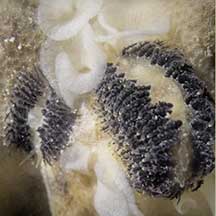 Phestilla lugubris with egg mass. Raffles Lighthouse, Jan 22 Photo shared by Vincent Choo on facebook. |
| Small animals may also burrow into the living coral, the coral turning pink at the 'wound'. Sometimes, the colony may have many 'bite marks' that might have been made by fishes. |
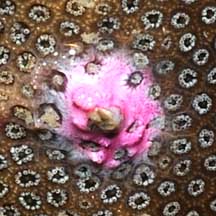 A burrowing animal? St. John's Island, Aug 08 |
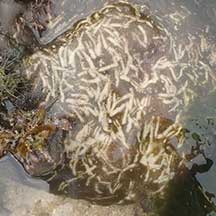 Bite marks - made by fishes? Pulau Tekukor, Jan 17 |
| Corals in distress: Sometimes, the coral may be seen with a layer of slime, peeling off. This might be a sign of distress, e.g., an effort by polyps to rid themselves of pollutants. During mass coral bleaching, recently dead portions of the colony turn grey and smell bad (like rotting fish). |
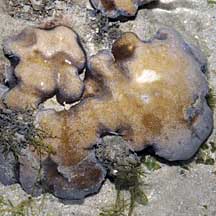 Pulau Tekukor, May 10 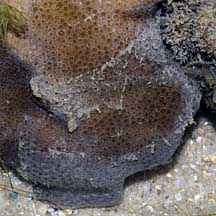 Layer of slime peeling off. |
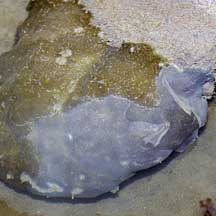 Tanah Merah, Sep 10 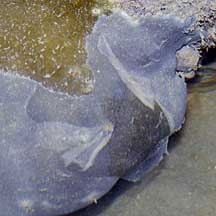 Layer of slime peeling off. |
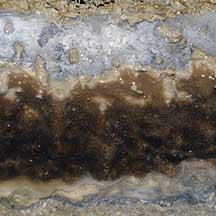 Sisters Island, Jul 10 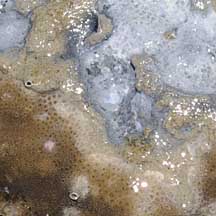 Diseased coral after coral bleaching. |
| It's hard to distinguish the different species of pore corals without
close examination. On this website, they are grouped into branching
pore corals and boulder-shaped pore corals for convenience of display. Status: While a few species are listed as Vulnerable and Near Threatened, for most there is inadequate information as at 2024 to make an informed assesment of their conservation status in Singapore. |
| Porites
species recorded for Singapore from Checklist of Cnidaria (non-Sclerectinia) Species with their Category of Threat Status for Singapore by Yap Wei Liang Nicholas, Oh Ren Min, Iffah Iesa in G.W.H. Davidson, J.W.M. Gan, D. Huang, W.S. Hwang, S.K.Y. Lum, D.C.J. Yeo, May 2024. The Singapore Red Data Book: Threatened plants and animals of Singapore. 3rd edition. National Parks Board. 663 pp. in red are those listed as threatened in the above.
|
|
Acknowledgement
References
|
